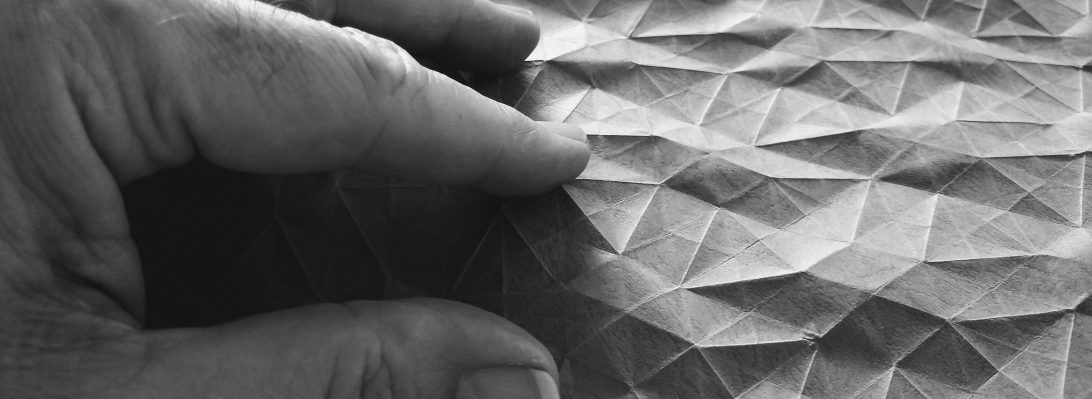Researching tessellations, I stumbled across a paper, written by Helena Verrill (Queens University, Kingston, Canada) that generally introduced the concept and looked at a number of common tiling patterns, but the first CP is one I had not seen before:

I did a small tester and loved (fluked) the collapse, and decided to scale up to a full A3 sheet, starting with a square grid. Then nested adjacent squares are layed in on diagonals to provide odd inverse hinges.

I am quite happy with this, and if more ambitious, I would fold it much smaller on a larger sheet – it would make amazing dragon skin.
Continue reading


















